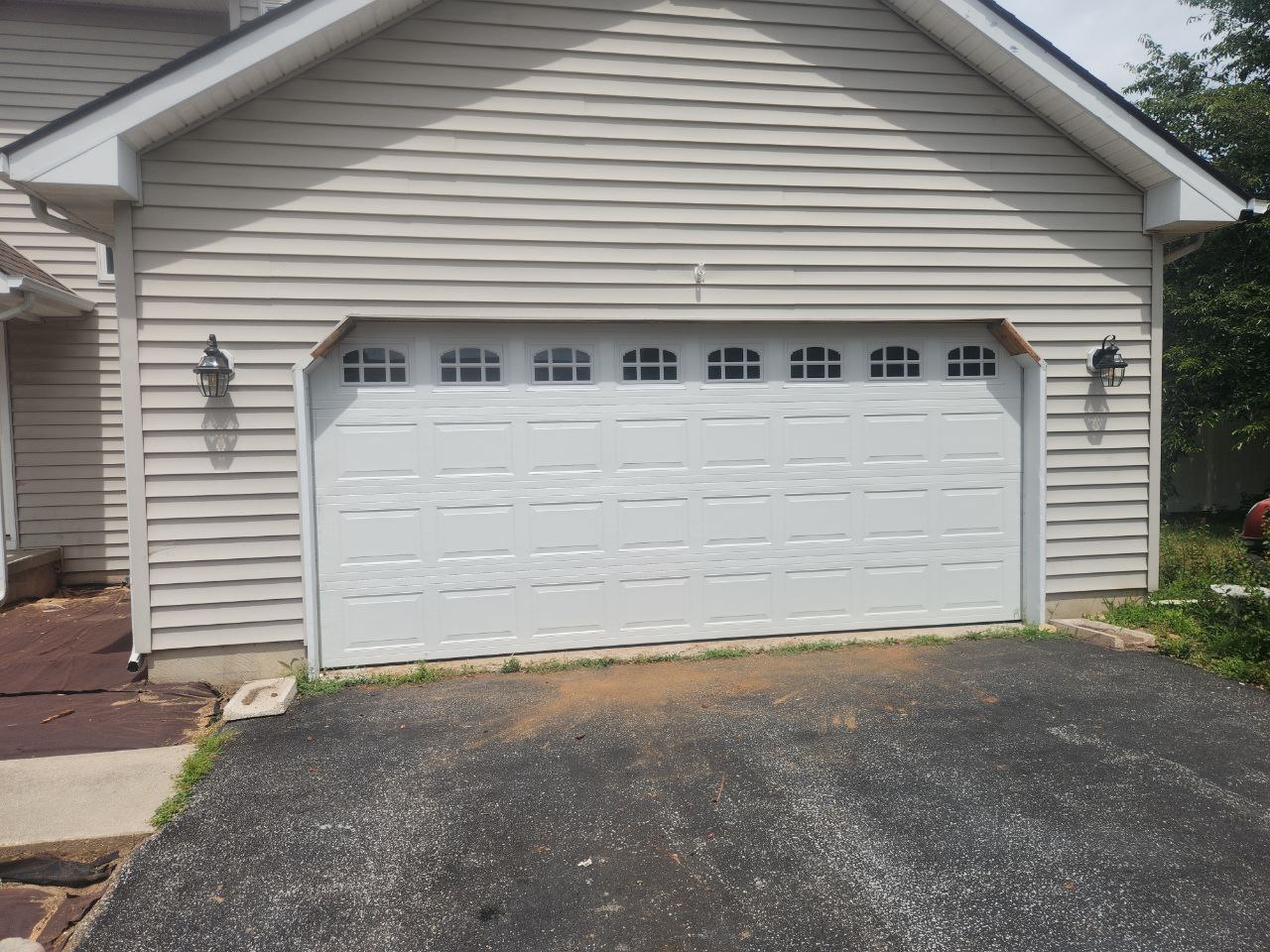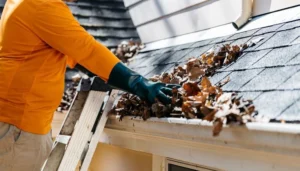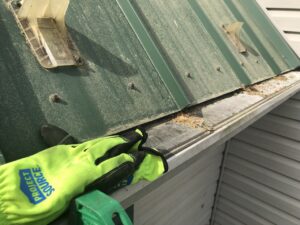There’s nothing quite like the sound of a squeaky, grinding garage door to disrupt your peaceful morning routine. If your garage door has been making more noise than usual or seems to struggle when opening and closing, it’s probably crying out for some attention.
The good news? Learning how to lubricate garage door components is one of the easiest and most effective ways to keep your system running smoothly for years to come.
Why Garage Door Lubrication Matters
Think of garage door lubrication as essential healthcare for one of your home’s hardest-working features. Your garage door cycles up and down countless times throughout the year, and all those moving parts create friction. Without proper lubrication, that friction leads to premature wear, annoying noises, and eventually costly repairs.
Regular garage door maintenance through proper lubrication can extend the life of your door by years and save you significant money in the long run.
Choosing the Best Lubricant for Garage Doors
Not all lubricants are created equal, and this is especially true when it comes to garage door upkeep. You’ll want to reach for a silicone-based spray or white lithium grease specifically designed for garage doors. These garage door lubricant options are formulated to resist dirt and grime while providing long-lasting protection to your moving components.
Here’s a little secret that surprises many homeowners: that can of standard WD-40 in your toolbox isn’t actually your best friend here. While WD-40 is fantastic for cleaning and removing rust, it’s more of a solvent than a true lubricant.
Using it on your garage door can actually attract more dust and debris over time. Instead, look for products like CRC Heavy Duty Silicone Lubricant, WD-40 Specialist White Lithium Grease, or 3-IN-ONE Professional Garage Door Lubricant. These specialized formulas are worth the investment.
Also Read: How to Install a Garage Door Opener: Step-by-Step Tutorial
Getting Ready: Preparation and Safety First
Before you dive into the actual lubrication process, a little preparation goes a long way. Start by disconnecting your automatic opener and keeping the door in the down position. This simple safety step prevents any unexpected movement while you’re working on the door.
Next, grab a clean cloth and give all the moving components a good wipe-down. You want to remove old lubricant, dust, and debris that have accumulated over time. Think of it as giving your door a fresh start. While you’re cleaning, take a moment to inspect everything.
Look for loose bolts, worn parts, or any signs that something might need professional attention. Catching these issues early can prevent bigger problems down the road.
Safety gear matters too. Pop on a pair of gloves and safety glasses before you start. These simple precautions protect you from irritation and accidental splashes. If you need to reach high components, use a sturdy ladder and make sure children and pets are safely away from the work area.
Understanding Lubrication On Garage Door Rollers and Hinges
When it comes to garage door maintenance, knowing what to lubricate is just as important as knowing how to do it. Let’s walk through each component that needs your attention.
Hinges and Pivot Points
Your garage door hinges are the unsung heroes that allow the door to bend and flex as it travels along the tracks. Apply your chosen lubricant directly to the pivot points and hinge pins. These areas bear significant stress with every door cycle, so don’t skip them.
The Role of Rollers
Garage door rollers and hinges work together to create smooth movement, and the rollers deserve special attention. If you have metal rollers with exposed ball bearings, give those bearings a light spray of lubricant.
However, here’s an important distinction: avoid spraying the roller wheels themselves or the tracks. Lubricating these areas can actually cause slipping and create a mess that attracts dirt.
Also, if you have nylon rollers, you can skip them entirely as they’re designed to operate without lubrication.
Springs Need Attention Too
Your torsion or extension springs do the heavy lifting every time your door opens. Apply a thin, even coating of lubricant along the full length of the springs. Let it soak in for a moment, then manually move the door to help distribute the lubricant evenly. Just remember: a little goes a long way here. Too much lubricant can get gummy and counterproductive.
Don’t Forget the Drive System
If your opener uses a chain or screw drive mechanism, give it some attention too. Apply a light coating along the chain or screw rail. However, if you have a belt drive opener, leave it alone. Belt drives are designed to be maintenance-free and don’t require lubrication.
Other Important Areas
Bearing plates, end plates, and pulleys all benefit from a quick shot of lubricant at their exposed bearings. Even your door’s lock mechanism and handle can use a tiny amount to prevent sticking and ensure smooth operation.
Also Read: How to Choose a Modern Farmhouse Garage Door
Mastering the Application Technique
The way you apply lubricant matters just as much as what you use. Here’s a pro tip: hold a piece of cardboard behind the area you’re spraying. This simple trick catches overspray and protects your walls and floors from stains.
Use the extension straw that comes with most spray cans for precise, pinpoint application. This gives you control and prevents waste. Remember that less is more when it comes to garage door lubrication. Over-lubricating creates a sticky surface that attracts dust, dirt, and debris, which defeats the entire purpose.
After you’ve applied lubricant to all the necessary components, manually open and close the door several times. This movement works the lubricant into all the nooks and crannies while helping you identify any remaining noise or stiffness that might indicate other issues.
How Often Should You Lubricate Your Garage Door?
This is one of the most common questions homeowners ask about garage door maintenance. The general rule of thumb is to lubricate garage door components every six months under normal conditions. However, your specific situation might call for more frequent attention.
If you live in a coastal area with salt air, a dusty environment, or a region with extreme temperature swings, consider lubricating every three months. Similarly, if your family uses the garage door heavily throughout the day, more frequent lubrication helps maintain optimal performance.
Pay attention to what your door is telling you. If it starts squeaking, grinding, or operating more slowly between your regular maintenance sessions, don’t wait. Give it some lubrication and see if that resolves the issue.
Troubleshooting After Lubrication
Sometimes you’ll lubricate everything properly and still hear noises or experience stiffness. This isn’t necessarily a sign you did something wrong. It could indicate that some components are worn out and need replacement. Check for cracked rollers, damaged hinges, or loose hardware. Make sure all bolts and screws are properly tightened, as loose hardware can cause noise even with perfect lubrication.
If problems persist after lubricating and tightening everything, it’s time to call in a professional. Some issues go beyond basic maintenance and require expert attention to prevent safety hazards or more expensive repairs.
Conclusion
Learning how to lubricate garage door systems properly is an empowering skill that pays dividends in smooth operation, reduced noise, and extended component life. By dedicating just an hour or two twice a year to this essential maintenance task, you’re protecting your investment and ensuring your garage door continues to function reliably.
For any assistance with garage door repair or installation, we’re here to help—contact us today!



